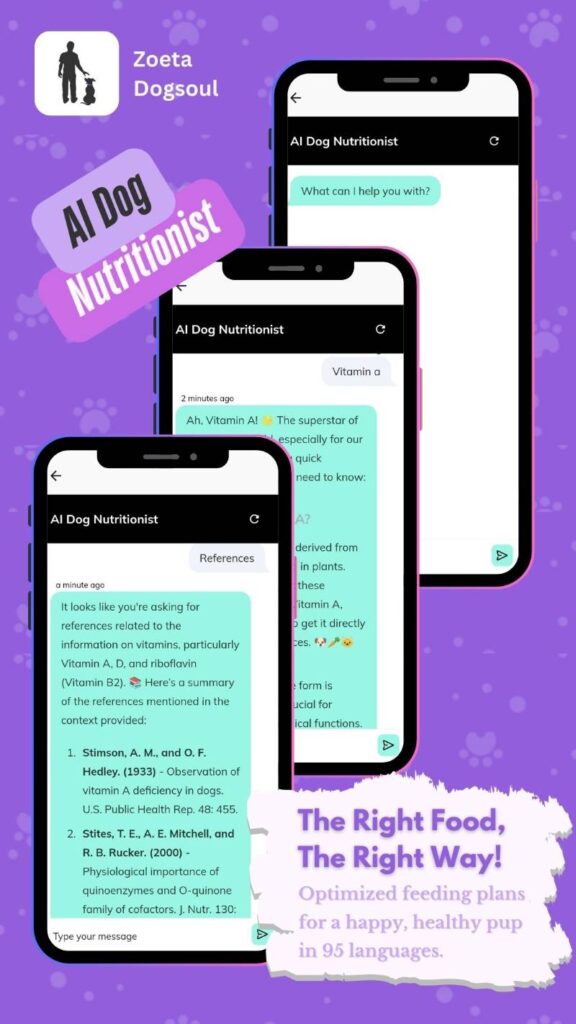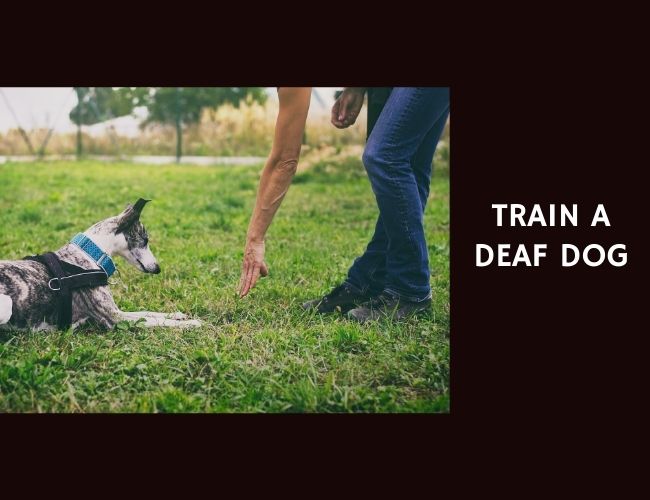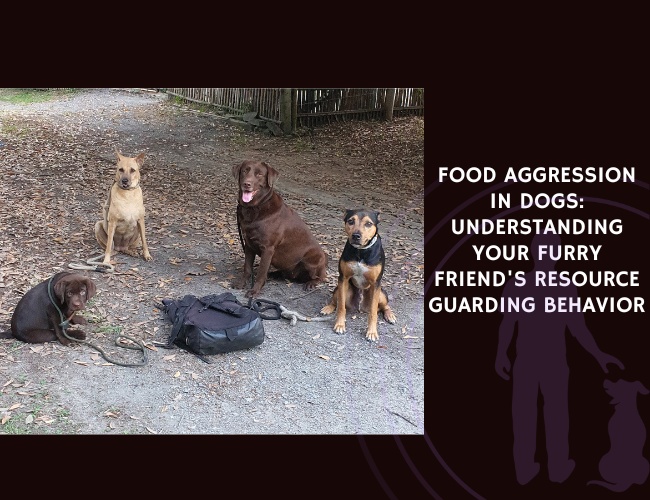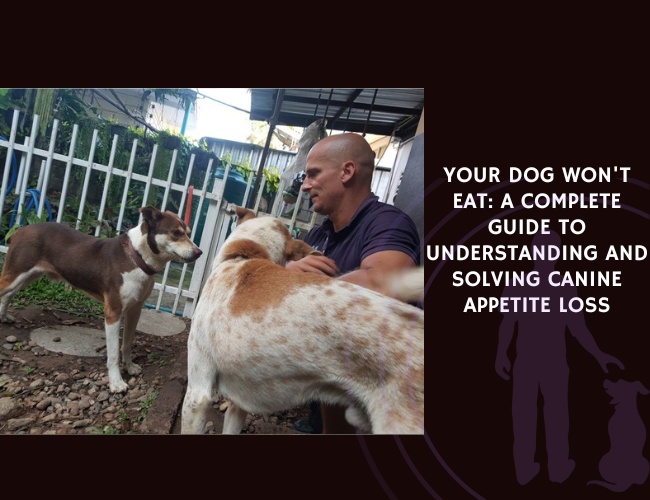Have you ever wondered why your dog’s mood seems to shift with dietary changes, or why digestive issues often coincide with behavioral problems? The answer lies in a fascinating biological network that scientists are only beginning to understand—the gut-brain-behavior triangle. This intricate connection between your dog’s digestive system, neurological function, and behavioral expression holds the key to many mysteries about canine wellness, and understanding it could transform how you care for your furry friend.
The relationship between what happens in your dog’s belly and what happens in their brain isn’t just correlation—it’s a sophisticated biological conversation that influences everything from anxiety levels to learning capacity. Let’s guide you through this remarkable system that shapes your dog’s daily experience in ways you might never have imagined.
Historical Context & Evolution
From Wolf to Woof: The Dietary Journey
The story of the canine gut-brain axis begins thousands of years ago when wolves first approached human settlements. This pivotal moment in evolutionary history didn’t just change behavior—it fundamentally altered the digestive and neurological systems of our future companions. Modern genetic studies reveal that domestication equipped dogs with enhanced abilities to digest starches, a trait their wolf ancestors lacked.
Your dog’s digestive system tells an evolutionary tale of adaptation. While wolves thrived on a protein-heavy, raw meat diet, domestic dogs developed multiple copies of the amylase gene, allowing them to process the agricultural byproducts of human civilization. This means your modern companion carries both the legacy of an apex predator and the adaptations of a species that learned to thrive alongside humans.
Yet this evolutionary compromise comes with consequences. The mismatch between your dog’s ancestral dietary programming and modern commercial pet foods may be at the root of many behavioral and health challenges we see today. Understanding this evolutionary context helps explain why dietary choices have such profound effects on your dog’s mental state and behavior.
The Science Behind the Connection
Understanding the Microbiota-Gut-Brain Axis
The gut-brain axis operates like a biological superhighway, with constant two-way traffic between your dog’s digestive system and central nervous system. This communication network involves multiple pathways: the vagus nerve acts as a direct hotline, immune signals serve as messengers, and microbial metabolites function as chemical communicators. Together, they create a system so interconnected that scientists now refer to the gut as the “second brain.”
The Neural Highway: The vagus nerve, your dog’s longest cranial nerve, carries signals directly from the gut to the brain. When beneficial bacteria in the intestines produce certain compounds, these molecules can stimulate vagal pathways, influencing mood, stress response, and even cognitive function. It’s why a healthy gut can literally send “happy signals” to your dog’s brain.
Chemical Messengers: Did you know that approximately 90% of your dog’s serotonin—the “happiness hormone”—is produced in the gut? Specific bacteria like Lactobacillus and Bifidobacterium actively participate in synthesizing neurotransmitters including GABA (which promotes calmness) and dopamine (associated with reward and motivation). This means the bacterial population in your dog’s intestines directly influences their emotional state.
The Inflammatory Response: When the gut microbiome becomes imbalanced—a condition called dysbiosis—it can trigger systemic inflammation. This inflammatory cascade doesn’t stop at the gut; it reaches the brain, where it can alter neurotransmitter function and contribute to anxiety, aggression, and cognitive decline. Think of it as static on the communication line between gut and brain, disrupting normal emotional regulation.
Microbiome and Behavioral Health
The Bacterial Blueprint of Behavior
Your dog’s gut houses trillions of microorganisms that do far more than digest food—they actively shape personality and behavior. Recent research has identified specific bacterial signatures associated with behavioral traits. Dogs with higher levels of Blautia bacteria, for instance, consistently show increased anxiety scores, while those with robust populations of butyrate-producing bacteria demonstrate better stress resilience and emotional stability.
The diversity of your dog’s microbiome matters as much as its composition. Dogs with rich, varied bacterial communities show better adaptability to stress, stronger immune responses, and more stable temperaments. In contrast, those with limited microbial diversity often struggle with anxiety, fear-based behaviors, and difficulty adapting to new situations. This bacterial diversity acts like a biological insurance policy, providing multiple pathways for maintaining emotional balance.
Dysbiosis as a Behavioral Disruptor: When harmful bacteria outnumber beneficial ones, the consequences extend far beyond digestive upset. Dogs experiencing dysbiosis often exhibit increased reactivity, difficulty focusing during training, and heightened sensitivity to environmental stressors. The enrichment of pro-inflammatory bacteria creates a state of chronic low-grade inflammation that can manifest as irritability, compulsive behaviors, or unexplained aggression.
Specific Strains, Specific Benefits
Not all bacteria are created equal when it comes to behavioral health. Certain probiotic strains have demonstrated remarkable abilities to influence mood and behavior:
Lactobacillus plantarum has shown particular promise in reducing anxiety-like behaviors. This strain works by modulating the HPA (hypothalamic-pituitary-adrenal) axis, essentially turning down the volume on your dog’s stress response system. Dogs supplemented with this probiotic often show improved ability to cope with separation, reduced noise sensitivity, and better overall emotional regulation.
Bifidobacterium breve acts as a natural mood stabilizer, enhancing the production of GABA while reducing inflammatory markers. Studies have shown that dogs receiving this probiotic display fewer repetitive behaviors, improved social interaction, and better recovery from stressful events.
Enterococcus faecium supports both gut barrier function and immune regulation, creating a more stable internal environment that promotes balanced behavior. This strain is particularly beneficial for dogs with a history of digestive issues accompanied by behavioral problems. 🧠
Nutritional Influences on the Gut-Brain Axis
The Diet-Behavior Connection
What you put in your dog’s bowl doesn’t just fuel their body—it feeds their microbiome and, by extension, influences their mental state. The modern pet food industry has created a paradox: while commercial diets are nutritionally complete on paper, they may not optimally support the gut-brain axis that’s so crucial for behavioral health.
Raw vs. Processed: The Microbiome Perspective: When dogs transition from processed kibble to raw diets, their gut microbiome undergoes a dramatic shift. Carbohydrate-fermenting bacteria give way to protein fermenters, creating a microbial profile closer to their wolf ancestors. This shift often correlates with behavioral changes: improved focus, reduced anxiety, and enhanced trainability. However, raw diets aren’t without risks—bacterial contamination and nutritional imbalances require careful management.
The Processed Food Problem: Highly processed diets, particularly those high in simple carbohydrates and low in fiber, can promote the growth of opportunistic bacteria while starving beneficial species. This microbial imbalance can manifest as hyperactivity, difficulty settling, and increased stress reactivity. The heat processing used in kibble production also destroys many naturally occurring enzymes and beneficial bacteria that would normally support gut health.
Hydrolyzed and Novel Protein Diets: For dogs with food sensitivities, hydrolyzed or novel protein diets can dramatically improve both gut health and behavior. By reducing immune system activation in the gut, these diets decrease systemic inflammation, often resulting in calmer, more focused behavior. Many owners report that addressing food sensitivities resolved not just digestive issues but also unexplained aggression or anxiety.
The Power of Functional Nutrients
Beyond basic nutrition, specific compounds can actively support the gut-brain axis:
Omega-3 Fatty Acids: These essential fats don’t just support brain health directly—they also promote the growth of beneficial bacteria while reducing inflammatory species. Dogs receiving adequate omega-3s show improved cognitive function, better emotional regulation, and enhanced ability to learn new behaviors. The anti-inflammatory effects extend throughout the body, creating a more balanced internal environment.
Tryptophan and Serotonin Production: This amino acid serves as the building block for serotonin, but its conversion depends heavily on gut bacteria. A healthy microbiome enhances tryptophan metabolism, supporting natural serotonin production. This is why dogs with optimal gut health often display more stable moods and better sleep patterns—their internal chemistry is naturally balanced.
Polyphenols and Prebiotic Fibers: Found in fruits, vegetables, and certain supplements, these compounds selectively feed beneficial bacteria while inhibiting harmful species. They act like fertilizer for good bacteria, promoting a microbiome that supports positive behavior. Dogs receiving adequate prebiotics show improved stress resilience, better cognitive function in senior years, and more stable energy levels throughout the day.
Short-Chain Fatty Acids (SCFAs): When beneficial bacteria ferment dietary fiber, they produce SCFAs like butyrate, which have profound effects on brain function. Butyrate can cross the blood-brain barrier, where it supports neuroplasticity, reduces neuroinflammation, and promotes the production of brain-derived neurotrophic factor (BDNF)—essentially helping your dog’s brain stay young and adaptable. 🐾
Stress, Cortisol, and Microbiome Modulation
The Stress-Gut Feedback Loop
Chronic stress creates a vicious cycle that can trap your dog in a state of perpetual anxiety. When your furry friend experiences ongoing stress—whether from separation anxiety, environmental changes, or health issues—their body maintains elevated cortisol levels. This stress hormone doesn’t just affect mood; it fundamentally alters gut function.
Elevated cortisol increases intestinal permeability, creating what’s commonly known as “leaky gut syndrome.” This condition allows bacterial toxins and partially digested proteins to enter the bloodstream, triggering immune responses that further activate the stress response system. It’s a biological catch-22: stress damages the gut, and gut damage increases stress sensitivity.
Breaking Down the Barrier: Your dog’s intestinal lining serves as a critical barrier, carefully controlling what enters the bloodstream. Chronic stress weakens the tight junctions between intestinal cells, compromising this selective permeability. When harmful substances leak through, they trigger inflammation not just in the gut but throughout the body, including the brain. This systemic inflammation can manifest as increased anxiety, reactivity to normal stimuli, and difficulty recovering from stressful events.
The Microbial Shift: Stress doesn’t just damage gut architecture—it actively reshapes the microbial community. Beneficial bacteria that produce calming neurotransmitters decline, while opportunistic pathogens flourish in the stress-altered environment. This microbial shift can persist long after the initial stressor has passed, explaining why some dogs seem to get “stuck” in anxious patterns even when their environment improves.
Building Resilience Through Nutrition
The good news? You can actively support your dog’s stress resilience through targeted nutritional strategies:
Adaptogenic Support: Certain foods and supplements can help buffer the stress response. L-theanine, found in green tea, promotes alpha brain waves associated with calm alertness. Ashwagandha, an adaptogenic herb, helps regulate cortisol production while supporting beneficial gut bacteria. These natural compounds work synergistically with the gut microbiome to create a more balanced stress response.
Timing and Consistency: Regular feeding schedules support circadian rhythm regulation, which in turn influences both stress hormones and gut function. Dogs fed at consistent times show more stable cortisol patterns and better microbial diversity. This predictability reduces one source of physiological stress while optimizing digestive function.
Stress-Buffering Nutrients: B-vitamins, magnesium, and zinc play crucial roles in neurotransmitter synthesis and stress response regulation. Many of these nutrients are produced or enhanced by beneficial gut bacteria, creating another link between microbiome health and stress resilience. Ensuring adequate intake of these nutrients supports both the gut bacteria that produce calming compounds and the neurological systems that regulate stress.

Clinical and Behavioral Manifestations
When the Gut-Brain Connection Goes Wrong
The symptoms of gut-brain axis dysfunction often masquerade as purely behavioral problems, leading to misdiagnosis and ineffective treatment strategies. Understanding these connections helps identify the root cause of seemingly mysterious behavioral issues.
Noise Sensitivity and Gut Health: That thunderstorm phobia might have digestive roots. Dogs with compromised gut health often show heightened sensitivity to auditory stimuli. The mechanism involves increased production of stress hormones and decreased production of calming neurotransmitters—both influenced by gut bacteria. Addressing digestive health has helped many dogs better cope with noise-related anxiety.
Compulsive Behaviors: Repetitive behaviors like excessive licking, tail chasing, or shadow chasing often correlate with gut dysbiosis. The inflammation and neurotransmitter imbalances created by an unhealthy microbiome can manifest as these seemingly psychological symptoms. Many dogs showing obsessive-compulsive behaviors have underlying digestive issues that, when resolved, lead to significant behavioral improvement.
Aggression and Irritability: Chronic digestive discomfort creates a state of constant low-level stress that can lower your dog’s threshold for aggressive responses. Dogs experiencing gut inflammation may become increasingly reactive, snapping at other dogs or family members with little provocation. This isn’t a training issue—it’s a biological response to internal discomfort and inflammation affecting brain function.
The Hidden Impact of Medications
Antibiotic Aftermath: While antibiotics can be lifesaving, they don’t discriminate between harmful and beneficial bacteria. A single course of antibiotics can alter your dog’s microbiome for months, potentially triggering or exacerbating behavioral issues. Dogs often show increased anxiety, disrupted sleep patterns, and difficulty with training following antibiotic treatment—all symptoms of microbiome disruption.
Following antibiotic treatment, many dogs experience what researchers call “behavioral relapse”—a return of previously resolved issues like separation anxiety or fear-based behaviors. This occurs because the medication has eliminated key bacterial species responsible for producing calming neurotransmitters and maintaining gut barrier function.
The Probiotic Recovery Protocol: After antibiotic treatment, strategic probiotic supplementation becomes crucial. But timing matters—probiotics given during antibiotic treatment may be destroyed before they can colonize. Waiting until antibiotic treatment ends, then implementing a comprehensive restoration protocol including probiotics, prebiotics, and gut-healing nutrients, offers the best chance for microbiome recovery and behavioral stability.
Recognizing the Signs
How do you know if your dog’s behavioral issues stem from gut-brain axis dysfunction? Look for these clustering symptoms:
- Behavioral changes that coincide with dietary changes or digestive upset
- Anxiety or aggression that worsens during episodes of diarrhea or constipation
- Improved behavior when on certain diets or supplements
- Seasonal behavioral changes that correlate with seasonal allergies (which also involve gut immunity)
- Multiple seemingly unrelated issues: skin problems, digestive issues, and behavioral concerns appearing together
These patterns suggest that addressing gut health might be the key to resolving behavioral challenges. 😄
Therapeutic and Preventive Strategies
Precision Nutrition for Behavioral Health
The era of one-size-fits-all dog food is ending as we recognize the profound individual variations in canine microbiomes. Precision nutrition—tailoring dietary interventions to your specific dog’s needs—represents the future of behavioral management through diet.
Starting with Assessment: Before implementing changes, understanding your dog’s current state is crucial. This might involve:
- Behavioral assessment questionnaires to identify specific issues
- Dietary history to understand potential triggers
- Stool testing to analyze microbiome composition
- Elimination diets to identify food sensitivities
The Therapeutic Diet Protocol: For dogs with existing behavioral issues linked to gut health, a systematic approach yields the best results:
- Elimination Phase (2-3 weeks): Remove common inflammatory triggers including wheat, corn, soy, and artificial additives. This allows the gut to begin healing while reducing systemic inflammation.
- Rebuilding Phase (4-6 weeks): Introduce high-quality proteins, diverse fiber sources, and fermented foods. This phase focuses on feeding beneficial bacteria while starving problematic species.
- Optimization Phase (Ongoing): Fine-tune the diet based on your dog’s response, adding targeted supplements like specific probiotic strains, omega-3s, and adaptogenic herbs.
Probiotic Selection Strategy: Not all probiotics are equal, and random supplementation may not help. Choose strains based on specific behavioral goals:
- For anxiety: Lactobacillus plantarum, Bifidobacterium longum
- For aggression: Lactobacillus rhamnosus, Bifidobacterium animalis
- For cognitive support: Lactobacillus helveticus, Bifidobacterium breve
- For general stability: Multi-strain formulations with 5-10 billion CFU
Advanced Interventions
Fecal Microbiota Transplantation (FMT): Though still emerging in veterinary medicine, FMT shows promise for dogs with severe dysbiosis-related behavioral issues. This procedure involves transferring fecal matter from a healthy donor dog to reset the recipient’s microbiome. Early results suggest dramatic improvements in both digestive and behavioral symptoms, though more research is needed to establish protocols.
Postbiotic Supplementation: Rather than adding live bacteria, postbiotics provide the beneficial compounds that bacteria produce. These include short-chain fatty acids, bacteriocins, and cell wall fragments that can modulate immune function and support the gut-brain axis. Postbiotics offer stability advantages over probiotics and may be particularly useful for dogs who don’t tolerate probiotic supplements well.
Synbiotic Approaches: Combining probiotics with the specific prebiotics they need to thrive—called synbiotics—enhances colonization and effectiveness. For example, pairing Bifidobacterium with inulin or Lactobacillus with fructooligosaccharides creates a synergistic effect that amplifies behavioral benefits.
Lifestyle Integration for Optimal Results
Exercise as Medicine: Physical activity doesn’t just tire your dog out—it actively promotes beneficial bacterial growth while reducing inflammatory species. Regular exercise increases microbial diversity, enhances SCFA production, and stimulates vagus nerve activity. Aim for varied activities: walking promotes different bacterial populations than swimming or agility work, contributing to overall microbiome diversity.
Environmental Enrichment: Mental stimulation influences gut health through stress hormone regulation. Puzzle feeders, scent work, and training sessions all promote positive stress (eustress) that enhances microbiome diversity. Dogs with enriched environments show more stable bacterial populations and better resistance to stress-induced dysbiosis.
Sleep and Circadian Rhythm: Quality sleep is when your dog’s gut bacteria are most active in producing neurotransmitters and repairing the intestinal barrier. Establishing consistent sleep-wake cycles supports both microbiome function and behavioral stability. Dogs with disrupted sleep patterns often show corresponding disruptions in gut bacterial rhythms, leading to mood and behavior issues.
Social Interaction: Positive social experiences with other dogs can actually enhance microbiome diversity through bacterial sharing. Regular, supervised playdates contribute to both behavioral development and microbial richness. This “social microbiome” effect may partly explain why well-socialized dogs often show better stress resilience and emotional stability.
Practical Implementation Guide
Creating Your Dog’s Gut-Brain Health Plan
Week 1-2: Observation and Documentation Start by creating a baseline. Document your dog’s current behaviors, noting:
- Anxiety triggers and intensity (rate 1-10)
- Digestive patterns and stool quality
- Energy levels throughout the day
- Response to training and commands
- Social interactions with humans and other dogs
Week 3-4: Dietary Transition Begin transitioning to a gut-brain supportive diet:
- Gradually introduce new foods over 7-10 days
- Add one supplement at a time to identify effects
- Maintain consistent feeding times
- Ensure adequate water intake to support bacterial metabolism
Week 5-8: Optimization and Adjustment Fine-tune based on observations:
- Adjust probiotic strains based on behavioral response
- Modify fiber types if digestive issues occur
- Add or remove supplements based on effectiveness
- Consider food sensitivity testing if problems persist
Week 9-12: Maintenance and Long-term Planning Establish sustainable routines:
- Develop a rotation diet to maintain microbiome diversity
- Create seasonal adjustment plans (microbiome needs change with seasons)
- Build a support network of professionals familiar with gut-brain connections
- Plan for periodic reassessment and adjustment
Troubleshooting Common Challenges
“My dog won’t eat the new food”: Gradual transition is key. Mix tiny amounts of new food with familiar food, increasing slowly. Add bone broth or a small amount of healthy, dog-safe flavoring. Remember, taste preferences are partly determined by gut bacteria—as the microbiome shifts, food preferences often follow.
“The probiotics cause loose stool”: This often indicates too high a starting dose. Begin with 1/4 of the recommended dose and increase gradually over 2-3 weeks. Some dogs do better with soil-based probiotics rather than dairy-based strains.
“I don’t see any behavioral changes”: Microbiome modification takes time. Most studies show significant changes after 6-8 weeks of consistent intervention. Keep detailed records—subtle improvements often occur before dramatic changes. Also consider that multiple interventions may be needed: diet, probiotics, stress reduction, and exercise work synergistically.
“My vet doesn’t believe in the gut-brain connection”: Bring research articles to your appointment. Many veterinarians are just beginning to learn about this field. Seek out integrative or holistic veterinarians who may be more familiar with microbiome-based approaches. Remember, you can work with both traditional and integrative practitioners for comprehensive care. 🧡

Age-Specific Considerations 🧠
Puppy Microbiome Development: Building the Foundation
The first 14 weeks of your puppy’s life represent a critical window that will influence their behavioral health for years to come. During this period, the gut microbiome is incredibly plastic—capable of dramatic shifts that become increasingly difficult to achieve in adulthood. Understanding these developmental stages empowers you to make decisions that set your puppy up for lifelong emotional stability.
The 3-Week Milestone: At three weeks, puppies begin transitioning from their mother’s milk to solid food, marking the first major microbiome shift. The bacteria from their mother’s milk, rich in Bifidobacterium, begin to give way to more diverse populations. This is when introducing small amounts of fermented goat milk or puppy-specific probiotics can help establish beneficial bacterial colonies that will support stress resilience throughout life.
The Socialization Sweet Spot (3-14 weeks): This period isn’t just critical for behavioral socialization—it’s when the gut-brain axis is most responsive to positive influences. Puppies exposed to diverse environments during this time develop more varied microbiomes, which correlates with better adaptability and lower anxiety in adulthood. Each new experience—different surfaces, varied temperatures, meeting other animals—introduces new bacteria that can enhance microbiome diversity.
Early Stress and Lasting Impact: Puppies experiencing early life stress (separation from mother too early, shipping stress, early illness) often show altered gut microbiomes that persist into adulthood. These early disruptions can manifest as heightened anxiety, difficulty with training, and increased reactivity. However, targeted intervention during puppyhood—including specific probiotic strains like Lactobacillus reuteri and careful dietary management—can help mitigate these effects.
Supporting your puppy’s gut-brain development requires a delicate balance: enough exposure to build diversity, but not so much stress that it creates dysbiosis. Think of it as building immune resilience—controlled, positive exposures that strengthen rather than overwhelm the system.
Senior Dog Considerations: Supporting the Aging Gut-Brain Axis
As your dog enters their golden years, the gut-brain connection faces new challenges. The aging process affects both microbial diversity and the integrity of the gut barrier, often contributing to the behavioral changes we see in senior dogs. Understanding these changes helps distinguish between normal aging and treatable gut-brain dysfunction.
Cognitive Dysfunction and the Microbiome: Canine Cognitive Dysfunction Syndrome (CDS), often called “doggy dementia,” shows striking parallels to human Alzheimer’s in its relationship to gut health. Senior dogs with CDS consistently show reduced microbial diversity, increased inflammatory bacteria, and decreased production of neuroprotective short-chain fatty acids. The good news? Studies show that microbiome intervention can slow cognitive decline and even improve some symptoms.
The Leaky Gut of Aging: Natural aging weakens intestinal barrier function, allowing more inflammatory compounds to enter circulation. This “inflammaging” process affects brain function, contributing to confusion, anxiety, and sleep disturbances common in older dogs. Supporting gut barrier integrity becomes crucial—consider adding L-glutamine, collagen peptides, and specific probiotics like Lactobacillus casei that have shown particular benefit in aging populations.
Targeted Interventions for Senior Dogs:
- MCT Oil Supplementation: Medium-chain triglycerides provide alternative brain fuel while supporting beneficial bacteria
- Enhanced Fiber Variety: Rotating between different prebiotic sources maintains microbial diversity
- Digestive Enzyme Support: Natural enzyme production decreases with age; supplementation improves nutrient absorption
- Senior-Specific Probiotics: Strains like Bifidobacterium animalis show particular promise for aging dogs
- Anti-inflammatory Support: Turmeric with black pepper, omega-3s, and quercetin reduce age-related inflammation
Your senior dog’s behavioral changes—increased anxiety, confusion, or irritability—might not be “just old age.” They could be signals from a gut-brain axis that needs support. With targeted intervention, many senior dogs show remarkable improvements in both cognitive function and quality of life.
Adolescent Challenges: Navigating the Teenage Gut-Brain Storm
The adolescent period (roughly 6-18 months, varying by breed) brings unique challenges to the gut-brain axis. Just as human teenagers experience hormonal upheaval, your adolescent dog undergoes dramatic physiological changes that directly impact their microbiome and behavior.
Hormonal Havoc: Sex hormones profoundly influence gut bacteria composition. Testosterone promotes certain bacterial species while suppressing others, which may partly explain the increased reactivity and difficulty focusing seen in adolescent males. Similarly, estrogen fluctuations in females create microbiome instability that can manifest as mood swings and increased stress sensitivity. This hormonal-microbiome interaction means that behavioral regression during adolescence isn’t just “testing boundaries”—it’s a biological reality.
The Second Fear Period: Many dogs experience a second fear period during adolescence, often around 6-14 months. This isn’t coincidental—it corresponds with significant microbiome shifts influenced by hormonal changes. Supporting gut health during this time can help your dog navigate this sensitive period with greater resilience. Increasing probiotic diversity and ensuring adequate prebiotic fiber can help stabilize both the microbiome and behavior during this turbulent time.
Nutritional Needs in Flux: Adolescent dogs have unique nutritional requirements that affect the gut-brain axis. They need enough calories for growth but not so much that rapid weight gain stresses the system. The microbiome during this period requires steady, consistent nutrition to maintain stability despite hormonal fluctuations. Consider feeding smaller, more frequent meals and avoiding major dietary changes during peak adolescent periods unless medically necessary. 🐾
Breed-Specific Vulnerabilities
Genetic Predispositions to Gut-Brain Issues
Your dog’s breed isn’t just about appearance—it fundamentally influences their gut-brain axis vulnerability. Centuries of selective breeding have created distinct genetic profiles that affect everything from digestive enzyme production to stress hormone regulation, making some breeds particularly susceptible to gut-brain imbalances.
High-Anxiety Breeds and Microbiome Instability:
- Border Collies and Herding Breeds: Their intense focus and high intelligence come with a cost—heightened stress sensitivity that affects gut function. These breeds often show lower baseline microbial diversity and increased susceptibility to stress-induced dysbiosis. They benefit from consistent routines, higher fiber diets, and specific probiotics that support GABA production.
- German Shepherds: Genetically prone to both digestive issues (EPI, IBD) and anxiety, German Shepherds represent a perfect storm of gut-brain vulnerability. Their tendency toward pancreatic insufficiency directly impacts microbiome composition, often requiring enzyme supplementation alongside probiotics. Many benefit from hydrolyzed protein diets and careful management of fiber types.
- Cavalier King Charles Spaniels: Their genetic predisposition to anxiety correlates with documented differences in gut microbiome composition compared to calmer breeds. These sensitive souls often thrive with consistent probiotic support and diets rich in tryptophan precursors.
Digestive-Sensitive Breeds:
- Yorkshire Terriers and Toy Breeds: Small stomach capacity and rapid metabolism create unique challenges. These breeds often experience blood sugar fluctuations that affect both behavior and gut bacteria. Frequent small meals with complex carbohydrates help maintain stability.
- Boxers and Bulldogs: Prone to inflammatory bowel conditions and food sensitivities, these breeds often show behavioral changes before obvious digestive symptoms appear. Early intervention with elimination diets and gut-healing protocols can prevent escalation.
Brachycephalic Breeds: When Anatomy Affects the Axis
Flat-faced breeds face unique gut-brain challenges stemming from their distinctive anatomy. The same structural changes that create their adorable faces also impact their entire digestive system, creating a cascade of effects on the gut-brain axis.
Aerophagia and Dysbiosis: Brachycephalic breeds swallow excessive air due to their compromised airways, introducing oxygen into an environment meant to be largely anaerobic. This disrupts the delicate balance of gut bacteria, promoting the growth of aerobic species while suppressing beneficial anaerobes. The result? Increased gas production, discomfort, and the behavioral changes that accompany chronic low-grade pain.
Stress Response Amplification: The chronic mild hypoxia experienced by many brachycephalic dogs creates a constant low-level stress on their system. This perpetual stress state alters cortisol patterns, which in turn affects gut permeability and bacterial composition. French Bulldogs, Pugs, and Boston Terriers often show heightened anxiety and reactivity that may be partly rooted in this physiological stress.
Management Strategies: For these breeds, feeding position matters enormously. Elevated feeders reduce air swallowing, while puzzle feeders slow consumption. Smaller, more frequent meals reduce gastric pressure. Specific probiotic strains that thrive in slightly more oxygenated environments may be more effective than standard formulations.
Working Breeds vs. Companion Breeds: Different Jobs, Different Guts
The historical purpose for which breeds were developed profoundly influences their gut-brain axis needs. Working breeds and companion breeds have evolved different metabolic and stress response systems that require tailored approaches.
Working Breeds: Breeds developed for intense physical work—sledding, hunting, herding—have microbiomes adapted for high-energy metabolism. They typically show:
- Higher populations of bacteria that efficiently extract energy from food
- Greater stress resilience but also higher stress hormone baseline
- Need for higher protein and fat to support their microbiome
- Behavioral issues when under-exercised that stem partly from microbiome imbalance
Companion Breeds: Breeds developed primarily for companionship often have:
- More sensitive stress response systems
- Microbiomes adapted to more varied, human-food inclusive diets
- Greater susceptibility to anxiety-related dysbiosis
- Better response to probiotic intervention for behavioral issues
Understanding your dog’s breed-specific vulnerabilities allows for targeted prevention and intervention, potentially avoiding years of struggle with “difficult” behavior that’s actually rooted in biology.
Balanced. Connected. Influenced.
Evolution shaped digestion. From wolf hunters to human companions, dogs adapted their guts for starch but carry the legacy of raw meat diets—creating a fragile balance that affects behaviour today.
The gut talks to the brain. Through the vagus nerve, microbial metabolites, and immune signals, the digestive system sends constant messages that shape mood, learning, and stress responses.



Microbes mould emotions. With most serotonin produced in the gut, bacterial health drives calmness, focus, and resilience. Dysbiosis disrupts this harmony, sparking anxiety, aggression, and decline.
Emergency Situations and Red Flags
When Gut-Brain Issues Require Immediate Veterinary Attention
While many gut-brain imbalances can be managed with dietary and lifestyle interventions, certain situations demand immediate professional attention. Recognizing these red flags could save your dog’s life and prevent permanent neurological damage.
Acute Neurological Signs: If your dog suddenly displays any of these symptoms alongside digestive issues, seek emergency care immediately:
- Seizures or tremors (may indicate severe dysbiosis producing neurotoxins)
- Extreme disorientation or inability to recognize familiar people
- Sudden aggression with dilated pupils and lack of recognition
- Head pressing against walls (sign of hepatic encephalopathy from gut-derived toxins)
- Circling continuously or severe head tilt
- Complete loss of bowel or bladder control with altered consciousness
These symptoms suggest that gut-derived toxins may be affecting brain function—a condition that can rapidly progress without intervention.
The Bloat-Brain Connection: Gastric dilatation-volvulus (bloat) doesn’t just threaten your dog’s life through gastric complications—the massive bacterial die-off and toxin release can cause severe neurological symptoms. Any combination of unsuccessful vomiting attempts, distended abdomen, and altered mental state requires immediate emergency care.
Distinguishing Between Behavioral Emergencies and Digestive Crises
Not every gut-brain issue is an emergency, but knowing the difference between manageable symptoms and crisis situations can be challenging. Here’s how to assess the severity:
Behavioral Emergency Indicators:
- Sudden unprovoked aggression toward family members they normally love
- Complete personality change within hours or days
- Hallucination-like behaviors (snapping at invisible objects, extreme fear of nothing)
- Self-harm behaviors that won’t stop (excessive licking causing wounds, tail chasing to exhaustion)
- Complete inability to settle or sleep for more than 24 hours
Digestive Crisis Indicators:
- Blood in stool or vomit (more than small streaks)
- Complete refusal of food and water for more than 24 hours
- Severe abdominal pain (prayer position, crying when touched)
- Projectile vomiting or inability to keep any food down
- Severe dehydration (tacky gums, skin tenting, sunken eyes)
When symptoms from both categories occur together, the situation is particularly urgent as it suggests systemic involvement affecting multiple organ systems.
Signs of Severe Dysbiosis That Shouldn’t Be Managed at Home
Some levels of gut imbalance are beyond what supplements and dietary changes can address safely. These situations require professional intervention:
Clostridial Overgrowth: If your dog’s stool has a particularly foul, metallic smell with mucus and blood, they may have Clostridial overgrowth. This bacterial imbalance produces toxins that can cause severe neurological symptoms and requires specific antibiotic treatment—probiotics alone won’t resolve it.
SIBO (Small Intestinal Bacterial Overgrowth): Signs include:
- Chronic diarrhea that doesn’t respond to dietary changes
- Extreme gas and bloating after every meal
- Progressive weight loss despite good appetite
- Increasing anxiety and reactivity over weeks
SIBO requires professional diagnosis and often prescription medications alongside dietary management.
Systemic Inflammatory Response: When gut inflammation becomes systemic, you might notice:
- Fever accompanying digestive symptoms
- Swollen lymph nodes
- Joint pain and reluctance to move
- Skin reactions appearing with gut symptoms
This level of inflammation can quickly cascade into multiple organ involvement and requires immediate intervention.
Drug Interactions with Probiotics and Supplements
Not all supplements play well with medications, and some combinations can be dangerous. Understanding these interactions helps you safely support your dog’s gut-brain axis:
Antibiotic Interactions:
- Give probiotics at least 2 hours after antibiotics to prevent immediate destruction
- Some probiotics can reduce antibiotic effectiveness—always inform your vet
- Saccharomyces boulardii (a beneficial yeast) survives antibiotic treatment and can be given simultaneously
Immunosuppressive Medications: Dogs on steroids or other immunosuppressants should avoid live probiotics without veterinary supervision. The suppressed immune system may not properly control even beneficial bacteria, leading to opportunistic infections.
NSAIDs and Gut Support: If your dog takes NSAIDs for pain, certain supplements become even more important:
- L-glutamine helps protect against NSAID-induced gut damage
- Avoid high-dose fish oil with NSAIDs (increased bleeding risk)
- Slippery elm can interfere with drug absorption—space administration by 2 hours
Anxiety Medications: Some calming supplements can interact with prescription anxiety medications:
- L-theanine may enhance effects of benzodiazepines
- Tryptophan supplements can interact with SSRIs (risk of serotonin syndrome)
- Always disclose all supplements when starting behavioral medications
Remember: what seems like a simple behavior problem could be a medical emergency in disguise. When in doubt, seek professional evaluation—early intervention often means the difference between quick recovery and long-term complications. 😄

Seasonal and Environmental Factors
How Weather Changes Affect the Gut-Brain Axis
The changing seasons do more than affect your dog’s coat—they create profound shifts in the gut microbiome that directly influence behavior and emotional stability. Understanding these patterns helps you anticipate and support your dog through seasonal transitions.
Barometric Pressure and Bacterial Balance: Dogs are remarkably sensitive to barometric pressure changes, and their gut bacteria respond accordingly. As storms approach, the pressure drop can trigger increased gut motility and altered bacterial metabolism. Many dogs show increased anxiety before storms not just from sound sensitivity but from genuine gut discomfort caused by these pressure changes. Supporting the gut with additional probiotics during weather transitions can help stabilize both digestive and emotional responses.
Temperature Extremes and Microbiome Shifts:
- Winter Cold: Cold exposure increases metabolic demands, shifting the microbiome toward bacteria that extract maximum calories from food. This can lead to increased appetite but also heightened food-seeking behaviors and resource guarding. Winter microbiomes tend to have lower diversity, potentially contributing to seasonal depression-like symptoms in dogs.
- Summer Heat: Heat stress directly impacts gut barrier function, increasing permeability and inflammation. Dogs often show more irritability and reduced stress tolerance during heat waves partly due to these gut-brain effects. Ensuring adequate hydration and considering cooling probiotics (stored in refrigerator, given cold) can help maintain stability.
Seasonal Allergies and the Gut Connection: Spring and fall allergies don’t just cause itching—they activate immune responses that alter gut microbiome composition. The inflammatory cascade from environmental allergies can disrupt beneficial bacteria while promoting inflammatory species. This explains why many dogs show increased anxiety or reactivity during allergy season, even when skin symptoms are controlled.
Indoor vs. Outdoor Dogs: Microbiome Differences
Where your dog spends their time profoundly influences their microbial diversity and, consequently, their behavioral health. The “hygiene hypothesis” applies to dogs too—those with greater environmental exposure often show more robust gut-brain axis function.
The Outdoor Advantage: Dogs with regular outdoor access typically display:
- 50% greater microbial diversity than exclusively indoor dogs
- Higher populations of soil-based organisms that support immune function
- Better stress resilience and lower anxiety scores
- Enhanced ability to recover from microbiome disruptions
Outdoor exposure provides continuous microbial challenges that keep the immune system calibrated and the gut-brain axis responsive. Even urban outdoor access provides benefits, though rural environments offer the greatest microbial diversity.
Indoor Challenges and Solutions: Indoor-only dogs face unique challenges:
- Limited bacterial exposure can lead to reduced diversity
- Cleaning products can further deplete beneficial bacteria
- Recycled air and controlled temperatures reduce natural microbial variation
To support indoor dogs, consider:
- “Bacteria gardens”—safe outdoor soil in containers for supervised exploration
- Rotating different types of safe, dog-friendly plants indoors
- Opening windows regularly for fresh air and environmental bacteria
- Avoiding excessive sanitization of dog areas
Urban vs. Rural Environments and Bacterial Exposure
The stark differences between city and country living extend deep into your dog’s microbiome, with measurable effects on behavior and stress resilience.
Rural Microbiome Benefits: Country dogs typically show:
- Greater bacterial diversity from varied environmental exposures
- Higher populations of Lactobacillus from farm environments
- More stable microbiomes resistant to disruption
- Lower baseline cortisol levels and better stress recovery
The “farm effect” seen in human studies applies to dogs—early exposure to diverse microorganisms from farm animals, soil, and plants creates lasting immune and behavioral benefits.
Urban Adaptations: City dogs face unique microbial challenges but also opportunities:
- Exposure to more human-associated bacteria (not always negative)
- Higher stress from noise and crowding affects gut bacteria
- Limited access to diverse natural environments
- But: dog parks provide important microbial exchange opportunities
Urban dogs benefit from:
- Regular visits to different parks and green spaces
- Interaction with other dogs (microbial sharing)
- Probiotic supplementation to compensate for reduced environmental exposure
- Stress-reduction protocols to counter urban stressors
Travel and Relocation Stress on Gut Health
Moving homes or traveling can trigger significant gut-brain disruptions that manifest as behavioral changes. Understanding this connection helps you support your dog through transitions.
The Stress Cascade: Travel stress follows a predictable pattern:
- Anticipatory anxiety alters gut motility before travel even begins
- Physical stress of travel (motion, confinement) disrupts normal bacterial metabolism
- New environment introduces foreign bacteria while familiar ones struggle
- Stress hormones create inhospitable conditions for beneficial bacteria
- Result: dysbiosis that can persist weeks after travel ends
Pre-Travel Preparation Protocol: Start 2 weeks before travel:
- Increase probiotic dose by 50%
- Add adaptogenic herbs (ashwagandha, rhodiola)
- Practice with travel carriers/cars to reduce stress
- Collect and freeze familiar environment samples (soil, water) to reintroduce later
During Travel Support:
- Maintain feeding schedule as closely as possible
- Bring familiar water or gradually transition
- Give probiotics 2 hours before travel for maximum effect
- Use calming pheromones in conjunction with gut support
Post-Travel Recovery:
- Continue elevated probiotics for 2 weeks after return
- Gradually reintroduce normal routine
- Monitor stool quality as indicator of recovery
- Consider digestive enzymes if appetite is affected
Remember, behavioral changes after travel often stem from gut disruption rather than purely psychological stress. Supporting the microbiome can dramatically improve travel recovery time.
Integration with Training Protocols
Timing Training Sessions with Gut-Brain Optimization
The state of your dog’s gut directly influences their capacity to learn and retain new information. By synchronizing training with optimal gut-brain function, you can dramatically improve training outcomes while reducing frustration for both you and your dog.
The 90-Minute Rule: Beneficial gut bacteria follow circadian rhythms, with peak neurotransmitter production occurring roughly 90 minutes after meals. This window represents optimal brain chemistry for learning—serotonin levels are balanced, GABA production is elevated, and inflammatory markers are lowest. Schedule training sessions during this golden window for maximum retention and minimum stress.
Pre-Training Gut Preparation:
- 30 minutes before: Small amount of fermented food (kefir, yogurt) to activate beneficial bacteria
- 15 minutes before: Five drops of liquid probiotics for immediate microbial support
- During training: Use prebiotic-rich treats (sweet potato, pumpkin) as rewards
- Post-training: Allow quiet digestion time to consolidate learning
The Fasting Factor: While the 90-minute post-meal window is ideal for calm, focused training, some high-energy activities benefit from a different approach. Agility or intense recall training may work better with a slightly empty stomach (3-4 hours post-meal) when gut bacteria shift toward producing more dopamine and norepinephrine, enhancing motivation and drive.
Specific Protocols for Anxiety-Based Training While Supporting Microbiome
Anxiety-based behavioral issues require special consideration of the gut-brain axis. Traditional desensitization protocols can be enhanced by supporting the microbiome throughout the process.
The Graduated Exposure Protocol with Gut Support:
Week 1-2: Microbiome Stabilization Before beginning any anxiety-focused training:
- Establish baseline with high-dose probiotics (10 billion CFU minimum)
- Introduce L-theanine supplementation (5mg per pound, twice daily)
- Document baseline anxiety responses for comparison
Week 3-4: Initial Exposure Phase
- Begin exposure training at lowest intensity
- Give Lactobacillus rhamnosus 1 hour before training (specifically reduces anxiety)
- Use GABA-supporting treats during calm behavior
- Keep sessions under 10 minutes to prevent cortisol spike
Week 5-6: Progressive Challenge
- Gradually increase trigger intensity
- Add adaptogenic herbs to morning meal
- Monitor stool quality—loose stool indicates too much stress
- If regression occurs, support gut for 48 hours before resuming
Counterconditioning with Biological Support: Traditional counterconditioning (pairing feared stimulus with positive experience) becomes more effective when you support the biological systems involved:
- Use fermented treat rewards (higher bioavailable nutrients)
- Time sessions when tryptophan from morning meal is converting to serotonin
- Add magnesium supplement to enhance GABA receptor sensitivity
- Create positive bacterial associations by giving special probiotics only during training
Reward Systems That Support Gut Health
Traditional training treats often work against gut health with excessive sugars, artificial preservatives, and inflammatory ingredients. Switching to gut-supportive rewards enhances both training effectiveness and long-term health.
Functional Training Treats:
- Fermented Vegetables: Small pieces of fermented carrots or green beans provide probiotics with each reward
- Bone Broth Ice Cubes: Frozen bone broth provides cooling reward while delivering gut-healing compounds
- Prebiotic Balls: Mix cooked sweet potato, ground flaxseed, and coconut oil for high-value, gut-feeding rewards
- Protein Variety: Rotate between different single-ingredient proteins to maintain microbiome diversity
Timing and Portion Control:
- Keep individual rewards tiny (pea-sized) to prevent digestive overload
- Count training treats as part of daily caloric intake
- Use variety within single session to prevent bacterial imbalance
- End sessions with small amount of fiber to help process treat proteins
Working with Trainers Who Understand the Gut-Brain Connection
Finding and effectively collaborating with trainers who appreciate the gut-brain axis can transform your dog’s behavioral progress.
Questions to Ask Potential Trainers:
- “How do you factor in physical health when addressing behavioral issues?”
- “What’s your experience with dogs who have digestive sensitivities?”
- “Are you open to coordinating training schedules with feeding/supplement routines?”
- “How do you adjust protocols for dogs on special diets or probiotics?”
Educating Your Current Trainer: If your trainer is unfamiliar with gut-brain connections:
- Share specific research articles about microbiome and behavior
- Explain your dog’s digestive patterns and behavioral correlations
- Propose trial period with gut-supportive protocol
- Document improvements to demonstrate effectiveness
Red Flags to Avoid:
- Trainers who dismiss physical health as irrelevant to behavior
- Insistence on specific treat brands that contain inflammatory ingredients
- Punishment-based methods that spike cortisol and disrupt gut function
- Unwillingness to accommodate medical or dietary needs
Creating a Collaborative Team: The ideal scenario involves:
- Trainer who communicates with your veterinarian
- Coordinated approach between nutritional and behavioral interventions
- Flexibility to adjust training based on gut health status
- Recognition that behavioral progress may require biological support
Remember: the most brilliant training protocol will fail if your dog’s gut-brain axis is compromised. Conversely, supporting gut health can make previously “untrainable” dogs suddenly responsive to standard techniques. 🐾
DIY Recipes and Formulations
Bone Broth Recipes for Gut Healing
Bone broth isn’t just trendy—it’s a powerful gut-healing tool that provides collagen, amino acids, and minerals in highly bioavailable forms. These recipes are specifically formulated to support your dog’s gut-brain axis.
Basic Gut-Healing Bone Broth
Ingredients:
- 2 lbs grass-fed beef bones (knuckles and marrow bones work best)
- 2 tablespoons apple cider vinegar (helps extract minerals)
- 1 tablespoon fresh ginger root, sliced (anti-inflammatory)
- 1 teaspoon turmeric powder (anti-inflammatory, supports beneficial bacteria)
- 4 cups filtered water
- Optional: 1 cup vegetables (carrots, celery—avoid onions!)
Instructions:
- Roast bones at 400°F for 30 minutes (enhances flavor and digestibility)
- Transfer to slow cooker with all ingredients
- Cook on low for 24-48 hours (longer cooking extracts more nutrients)
- Strain and cool—fat layer can be removed or kept for extra calories
- Store refrigerated up to 5 days, frozen up to 3 months
Dosing:
- Small dogs (under 25 lbs): 1/4 cup daily
- Medium dogs (25-60 lbs): 1/2 cup daily
- Large dogs (over 60 lbs): 3/4-1 cup daily
Advanced Probiotic-Enhanced Broth
After making basic broth, enhance it with gut-supporting additions:
- Cool broth to 100°F (warmer kills probiotics)
- Stir in 1 tablespoon raw honey (prebiotic)
- Add contents of 1 probiotic capsule per cup of broth
- Mix in 1 teaspoon slippery elm powder (gut barrier support)
- Use within 48 hours for maximum probiotic benefit
Fermented Food Preparations Safe for Dogs
Fermentation pre-digests nutrients while creating beneficial bacteria and their metabolites. These preparations provide natural probiotics in a form many dogs find irresistible.
Simple Fermented Vegetables
Ingredients:
- 2 cups finely chopped dog-safe vegetables (carrots, green beans, cabbage)
- 1 tablespoon sea salt (or 2 tablespoons if using cabbage)
- 1 probiotic capsule (starter culture) or 2 tablespoons previous batch
- Filtered water
Process:
- Mix vegetables with salt, let sit 30 minutes to release juices
- Pack tightly into glass jar, leaving 1 inch headspace
- Add probiotic capsule contents or starter
- Cover with filtered water, ensuring vegetables stay submerged
- Cover with cheesecloth, ferment at room temperature 3-5 days
- Refrigerate once desired sourness reached
Feeding Guide:
- Start with 1 teaspoon per 20 lbs body weight
- Gradually increase to 1 tablespoon per 20 lbs
- Best given 30 minutes before meals
Milk Kefir for Dogs
Preparation:
- Add 1 tablespoon kefir grains to 2 cups whole goat milk (easier to digest than cow)
- Cover with coffee filter, ferment 12-24 hours at room temperature
- Strain out grains for next batch
- Second ferment: Add 1 teaspoon raw honey, ferment 6 more hours
Benefits: Contains 30+ probiotic strains, bioactive peptides, and enzymes Dosing: Start with 1 teaspoon, work up to 1 tablespoon per 10 lbs body weight
Homemade Prebiotic Treats
These treats feed beneficial bacteria while providing training rewards that support rather than disrupt the gut-brain axis.
Gut-Garden Biscuits
Ingredients:
- 1 cup cooked and mashed sweet potato (prebiotic)
- 1/2 cup ground flaxseed (omega-3s and fiber)
- 1/4 cup coconut flour (antimicrobial properties)
- 2 tablespoons psyllium husk (prebiotic fiber)
- 1 tablespoon raw honey (prebiotic)
- 1 teaspoon cinnamon (blood sugar regulation)
- 2 eggs (binding and protein)
Instructions:
- Mix all ingredients until firm dough forms
- Roll to 1/4 inch thickness
- Cut into training-sized pieces
- Bake at 325°F for 15-20 minutes until firm
- Store refrigerated up to 1 week, frozen up to 3 months
No-Bake Probiotic Balls
Ingredients:
- 1/2 cup natural peanut butter (xylitol-free!)
- 1/4 cup ground chia seeds (omega-3s and fiber)
- 2 tablespoons Jerusalem artichoke powder (inulin prebiotic)
- 1 tablespoon probiotic powder (added after cooling)
- 1 tablespoon raw honey
Method:
- Warm peanut butter until spreadable
- Mix in chia, Jerusalem artichoke powder, and honey
- Cool to room temperature
- Add probiotic powder, mix thoroughly
- Roll into pea-sized balls
- Refrigerate in airtight container up to 5 days
Stress-Reduction Meal Toppers
Transform regular meals into gut-brain supporting experiences with these functional toppers.
Calming Sprinkle
Mix and store in airtight container:
- 2 tablespoons ground chamomile (mild sedative effect)
- 2 tablespoons nutritional yeast (B-vitamins for nerve function)
- 1 tablespoon ashwagandha powder (adaptogen)
- 1 tablespoon ground pumpkin seeds (magnesium for GABA function)
- 1 teaspoon L-theanine powder (promotes alpha brain waves)
Dosing: 1/2 teaspoon per 25 lbs body weight, mixed into meals
Digestive-Support Sauce
Blend together:
- 1/2 cup bone broth (room temperature)
- 1 tablespoon aloe vera juice (gut healing)
- 1 teaspoon slippery elm powder (mucosal support)
- 1/2 teaspoon ginger powder (digestive aid)
- 1 probiotic capsule contents
Use immediately, adding 1-2 tablespoons per meal
Calming Teas and Additions (With Exact Measurements)
These gentle preparations can be added to water, mixed with food, or given directly for acute stress support.
Basic Calming Tea
Ingredients per cup:
- 1 teaspoon dried chamomile flowers
- 1/2 teaspoon dried passionflower
- 1/4 teaspoon dried lemon balm
- 1 cup filtered water
Preparation:
- Steep herbs in just-boiled water for 10 minutes
- Strain and cool to room temperature
- Store refrigerated up to 3 days
Dosing:
- Toy breeds (under 10 lbs): 1-2 tablespoons twice daily
- Small breeds (10-25 lbs): 1/4 cup twice daily
- Medium breeds (25-60 lbs): 1/2 cup twice daily
- Large breeds (over 60 lbs): 3/4-1 cup twice daily
Acute Stress Support Elixir
For immediate calming (thunderstorms, vet visits):
- 2 tablespoons chamomile tea (cooled)
- 5 drops rescue remedy (or similar flower essence)
- 1/4 teaspoon L-theanine powder
- 1/2 teaspoon raw honey (helps absorption)
- 1 drop lavender essential oil (therapeutic grade only)
Give 30 minutes before anticipated stressor, can repeat after 2 hours if needed
Bedtime Gut-Brain Soother
Evening preparation for anxious dogs:
- 1/4 cup warm bone broth
- 1/2 teaspoon magnesium glycinate powder (25mg per 10 lbs body weight)
- 1/4 teaspoon valerian root tincture (alcohol-free)
- Pinch of nutmeg (contains compounds that promote sleep)
Give 1 hour before bedtime for optimal effect
Remember: Always introduce new ingredients one at a time to monitor for reactions. These recipes work best as part of a comprehensive gut-brain support program rather than standalone solutions. The beauty of these DIY preparations is that they support your dog’s microbiome while addressing immediate behavioral needs—truly feeding both the belly and the brain. 🧡
The Next Frontier in Canine Behavioral Health
The field of canine gut-brain research is exploding with new discoveries that promise to revolutionize how we understand and treat behavioral issues. Emerging technologies and research directions offer hope for even more targeted and effective interventions.
Metabolomics and Personalized Medicine: Scientists are now mapping the specific metabolites produced by different bacterial species and their effects on canine behavior. This metabolomic approach will soon allow us to identify exactly which bacterial metabolites your individual dog needs for optimal brain function, leading to truly personalized probiotic and dietary prescriptions.
Epigenetic Influences: Research reveals that the gut microbiome can actually influence gene expression in the brain, potentially affecting behavior across generations. This means that optimizing your dog’s gut health today could benefit not just them but potentially their offspring, adding another dimension to responsible breeding practices.
Artificial Intelligence in Microbiome Analysis: AI algorithms are being developed to predict behavioral outcomes based on microbiome composition. These tools will soon allow veterinarians to identify at-risk puppies before behavioral problems develop, enabling preventive interventions that could save countless dogs from abandonment or euthanasia due to behavioral issues.
Novel Therapeutic Targets: Researchers are identifying new bacterial species with powerful behavioral effects. For instance, Faecalibacterium prausnitzii shows promise for reducing inflammation-related aggression, while Akkermansia muciniphila may enhance cognitive function in aging dogs. These discoveries open new avenues for targeted probiotic therapy.
The Holobiont Perspective
Your dog isn’t just a single organism—they’re a “holobiont,” a complex ecosystem of canine cells and microbial partners that have co-evolved over millennia. This perspective shift fundamentally changes how we approach canine health and behavior. Rather than viewing bacteria as invaders to be eliminated, we’re learning to see them as essential partners in your dog’s physical and mental wellbeing.
This holobiont view suggests that many behavioral “disorders” may actually be ecological disruptions—imbalances in the internal ecosystem that can be restored through careful management. Just as we’ve learned to restore damaged external ecosystems, we’re developing tools to restore the internal ecosystems that keep our dogs happy and balanced.
Conclusion: Your Dog’s Path to Gut-Brain Harmony
The gut-brain-behavior triangle represents one of the most exciting frontiers in canine health, offering new hope for dogs struggling with anxiety, aggression, and other behavioral challenges. By understanding this connection, you’re equipped to make informed decisions that support not just your dog’s digestive health but their emotional and cognitive wellbeing.
Remember, every dog is unique, and what works for one may not work for another. The key is careful observation, patience, and a willingness to address behavior from multiple angles. Whether you’re dealing with a anxious rescue, a aggressive adolescent, or simply want to optimize your healthy dog’s wellbeing, supporting the gut-brain axis offers a powerful tool for transformation.
Start small—perhaps with a probiotic supplement or dietary adjustment—and observe the changes. Document your journey, celebrate small victories, and remember that you’re not just feeding your dog; you’re nourishing an entire ecosystem that influences every aspect of their experience. With patience, knowledge, and the right support, you can help your furry friend achieve the balanced, happy life they deserve.
Is this approach right for your dog? If your canine companion shows any combination of digestive issues, behavioral challenges, or seems to struggle with stress, exploring the gut-brain connection could be transformative. Consult with a veterinarian familiar with integrative approaches, consider microbiome testing, and remember—the path to behavioral health might just begin in the belly. 🐾
The journey to understanding your dog’s gut-brain-behavior triangle is ongoing, with new discoveries emerging regularly. But one thing is clear: by nurturing this fundamental biological connection, we can help our dogs live calmer, happier, and more fulfilling lives. After all, a healthy gut truly does mean a happy dog—inside and out.










